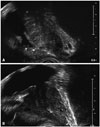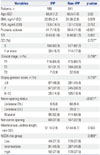1. Heidenreich A, Bastian PJ, Bellmunt J, Bolla M, Joniau S, van der Kwast T, et al. EAU guidelines on prostate cancer. part 1: screening, diagnosis, and local treatment with curative intent-update 2013. Eur Urol. 2014; 65:124–137.

2. Montorsi F, Wilson TG, Rosen RC, Ahlering TE, Artibani W, Carroll PR, et al. Best practices in robot-assisted radical prostatectomy: recommendations of the Pasadena Consensus Panel. Eur Urol. 2012; 62:368–381.

3. Walz J, Burnett AL, Costello AJ, Eastham JA, Graefen M, Guillonneau B, et al. A critical analysis of the current knowledge of surgical anatomy related to optimization of cancer control and preservation of continence and erection in candidates for radical prostatectomy. Eur Urol. 2010; 57:179–192.

4. Jenkins LC, Nogueira M, Wilding GE, Tan W, Kim HL, Mohler JL, et al. Median lobe in robot-assisted radical prostatectomy: evaluation and management. Urology. 2008; 71:810–813.

5. Jeong CW, Lee S, Oh JJ, Lee BK, Lee JK, Jeong SJ, et al. Quantification of median lobe protrusion and its impact on the base surgical margin status during robot-assisted laparoscopic prostatectomy. World J Urol. 2014; 32:419–423.

6. Coelho RF, Chauhan S, Guglielmetti GB, Orvieto MA, Sivaraman A, Palmer KJ, et al. Does the presence of median lobe affect outcomes of robot-assisted laparoscopic radical prostatectomy. J Endourol. 2012; 26:264–270.

7. Jung H, Ngor E, Slezak JM, Chang A, Chien GW. Impact of median lobe anatomy: does its presence affect surgical margin rates during robot-assisted laparoscopic prostatectomy. J Endourol. 2012; 26:457–460.

8. Meeks JJ, Zhao L, Greco KA, Macejko A, Nadler RB. Impact of prostate median lobe anatomy on robotic-assisted laparoscopic prostatectomy. Urology. 2009; 73:323–327.

9. Nose H, Foo KT, Lim KB, Yokoyama T, Ozawa H, Kumon H. Accuracy of two noninvasive methods of diagnosing bladder outlet obstruction using ultrasonography: intravesical prostatic protrusion and velocity-flow video urodynamics. Urology. 2005; 65:493–497.

10. Mariappan P, Brown DJ, McNeill AS. Intravesical prostatic protrusion is better than prostate volume in predicting the outcome of trial without catheter in white men presenting with acute urinary retention: a prospective clinical study. J Urol. 2007; 178:573–577.

11. Kojima Y, Takahashi N, Haga N, Nomiya M, Yanagida T, Ishibashi K, et al. Urinary incontinence after robot-assisted radical prostatectomy: pathophysiology and intraoperative techniques to improve surgical outcome. Int J Urol. 2013; 20:1052–1063.

12. Mohler JL, Kantoff PW, Armstrong AJ, Bahnson RR, Cohen M, D'Amico AV, et al. Prostate cancer, version 2.2014. J Natl Compr Canc Netw. 2014; 12:686–718.

13. Srivastava A, Chopra S, Pham A, Sooriakumaran P, Durand M, Chughtai B, et al. Effect of a risk-stratified grade of nerve-sparing technique on early return of continence after robot-assisted laparoscopic radical prostatectomy. Eur Urol. 2013; 63:438–444.

14. Xu D, Yu Y, Zhu Y, Huang T, Chen Y, Qi J. A new model consists of intravesical prostatic protrusion, prostate volume and serum prostatic-specific antigen in the evaluation of prostate cancer. Pathol Oncol Res. 2014; 20:439–443.

15. Lim KB, Ho H, Foo KT, Wong MY, Fook-Chong S. Comparison of intravesical prostatic protrusion, prostate volume and serum prostatic-specific antigen in the evaluation of bladder outlet obstruction. Int J Urol. 2006; 13:1509–1513.

16. Konety BR, Sadetsky N, Carroll PR. CaPSURE Investigators. Recovery of urinary continence following radical prostatectomy: the impact of prostate volume--analysis of data from the CaPSURE Database. J Urol. 2007; 177:1423–1425.

17. Kim KH, Kim YS. Correlation of male overactive bladder with intravesical prostatic protrusion. Korean J Urol. 2010; 51:843–846.

18. Park YJ, Bae KH, Jin BS, Jung HJ, Park JS. Is increased prostatic urethral angle related to lower urinary tract symptoms in males with benign prostatic hyperplasia/lower urinary tract symptoms. Korean J Urol. 2012; 53:410–413.

19. Lee JW, Ryu JH, Yoo TK, Byun SS, Jeong YJ, Jung TY. Relationship between intravesical prostatic protrusion and postoperative outcomes in patients with benign prostatic hyperplasia. Korean J Urol. 2012; 53:478–482.

20. Brunocilla E, Pultrone C, Pernetti R, Schiavina R, Martorana G. Preservation of the smooth muscular internal (vesical) sphincter and of the proximal urethra during retropubic radical prostatectomy: description of the technique. Int J Urol. 2012; 19:783–785.

21. Gacci M, Carini M, Simonato A, Imbimbo C, Gontero P, Briganti A, et al. Factors predicting continence recovery 1 month after radical prostatectomy: results of a multicenter survey. Int J Urol. 2011; 18:700–708.

22. Stolzenburg JU, Kallidonis P, Hicks J, Do M, Dietel A, Sakellaropoulos G, et al. Effect of bladder neck preservation during endoscopic extraperitoneal radical prostatectomy on urinary continence. Urol Int. 2010; 85:135–138.

23. Lowe BA. Comparison of bladder neck preservation to bladder neck resection in maintaining postrostatectomy urinary continence. Urology. 1996; 48:889–893.

24. Asimakopoulos AD, Miano R, Di Lorenzo N, Spera E, Vespasiani G, Mugnier C. Laparoscopic versus robot-assisted bilateral nervesparing radical prostatectomy: comparison of pentafecta rates for a single surgeon. Surg Endosc. 2013; 27:4297–4304.

25. Wei JT, Dunn RL, Litwin MS, Sandler HM, Sanda MG. Development and validation of the expanded prostate cancer index composite (EPIC) for comprehensive assessment of health-related quality of life in men with prostate cancer. Urology. 2000; 56:899–905.












 PDF
PDF ePub
ePub Citation
Citation Print
Print



 XML Download
XML Download